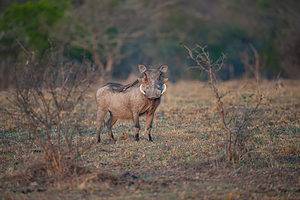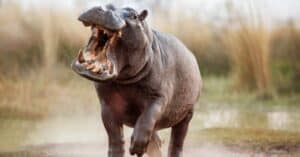Have you ever noticed that only mammals have tusks? No bird, reptile, or amphibians have grown this distinct feature – rather the tusk is a solely mammalian characteristic. A new study conducted by Harvard University looks at tusks and their mammalian distinction and uncovers the beginning of tusk evolution.
What Are Tusks?
We all know what animals have tusks: elephants, warthogs, walruses, and babirusas. Yet, until recently tusks have been a very undefined and ambiguous scientific term. In order to trace tusk evolution, researchers had to come up with a more concrete definition to distinguish tusks from teeth and other external bone growth in fossils.
For a tooth to be a tusk, researchers defined the feature as a bone made entirely of dentine that extends from the mouth and is ever-growing. This definition helps distinguish tusks from other tusk-like bones such as teeth. Teeth are usually covered in enamel, something that tusks should not have if made of dentine.
In addition, teeth are harder to replace than tusks. Teeth do not regrow if removed or damaged. Tusks, however, do. Researchers came up with this definition while working in Zambia on excavating dicynodont fossils.
Dicynodonts and Tusk Research
Dicynodonts lived around 250 million years ago. They are one of the only large animals from the Cretaceous period closely related to mammals. These creatures were herbivores and ranged from the size of a rat to the size of an elephant. They had no teeth, but rather two protruding tusks and a beak made of keratin.
While working on a dicynodont excavation site, researchers were surrounded by dicynodont “tusks” and realized many of the “tusks” didn’t actually fit their definition of tusks.
Researchers then observed thin slices of dicynodont tusks and teeth under a microscope. The specimens, primarily from South Africa, Zambia, Tanzania, and Antarctica, appeared to have evolved tooth attachment anatomy similar to mammals today. In addition, they grew tusks. However, true tusks were only found in later species of dicynodonts.
The discovery of when dicynodonts acquired true tusks answers some of researchers’ questions about how tusks evolved. They realized that tusks evolved parallel to teeth. As teeth became enamel-covered and irreplaceable, dicynodonts grew tusks to complement the shortcomings of teeth. Eventually, this evolution led to the modern tusk.
What Does This Research Mean For Tusked Mammals?
The discovery of how and when dicynodonts grew true tusks allows researchers to start pinpointing the reasons for tusk evolution in modern day mammals.
In their time, dicynodonts were the widest ranging, most diverse species on Earth. Today, they are the closest known relative of their time to modern mammals. By discovering the parallel evolution of tooth and tusk, researchers can better understand the evolution of elephants and hippopotamuses.
Researchers can also start to understand why species split on the evolutionary tract: some evolving with only enamel-covered teeth and others with a combination of teeth and tusks. This study could help pinpoint the challenges early mammals faced and the pressures that determined tusks versus teeth.
Finally, this study proves that in order for tusks to grow, tusked mammals must have also evolved with reduced rates of tooth replacement and a flexible ligament attachment. These traits are not in reptiles, amphibians, or birds and explain why only mammals have tusks.
Though it is still unknown if tusked mammals such as walruses or warthogs evolved tusks for the same reasons as elephants, understanding the evolutionary partners of tusks will inform future research on these mammals as well.
Learn More About Tusks And Tusk Evolution!
- Elephant Tusks: What Are They Made of & What’s Their Purpose?
- Seven Animals That Have Tusks (and How They’re Different From Horns)
- New Study: After Years of Poaching, Elephants Change Their Evolutionary Trajectory
The photo featured at the top of this post is © JPL Designs/Shutterstock.com
Sources
- , Available here: https://www.sciencedaily.com/releases/2021/10/211027085329.htm
- , Available here: https://royalsocietypublishing.org/doi/10.1098/rspb.2021.1670
- , Available here: https://www.nature.com/articles/d41586-019-03170-7
- , Available here: https://www.dinosaurjungle.com/prehistoric_animals_dicynodonts.php
Thank you for reading! Have some feedback for us? Contact the AZ Animals editorial team.






